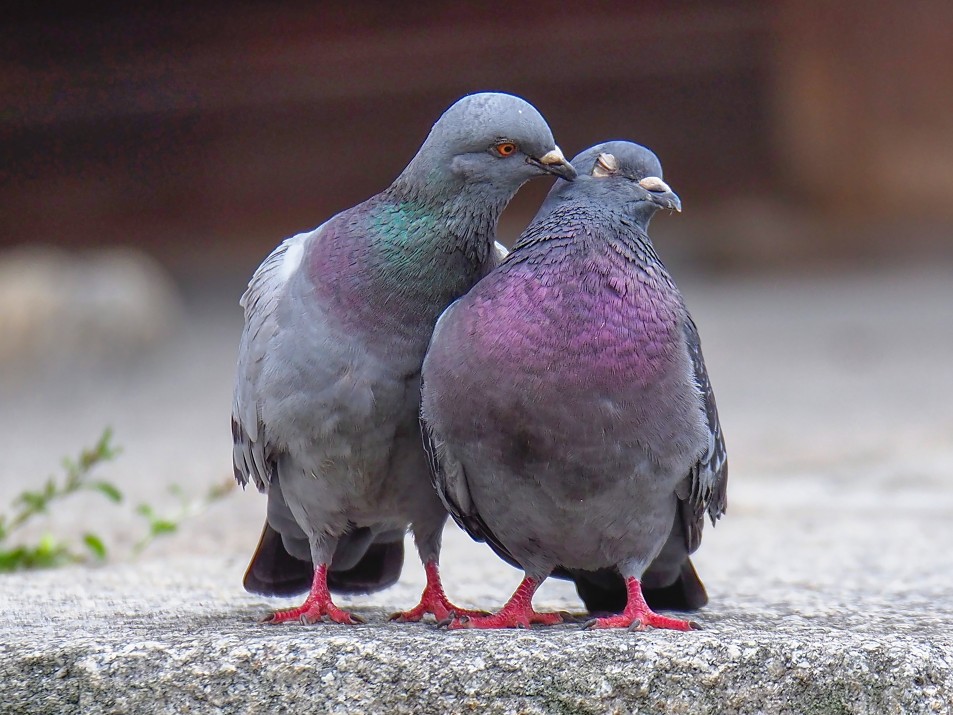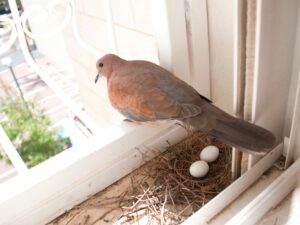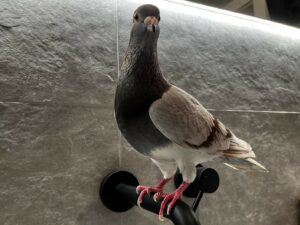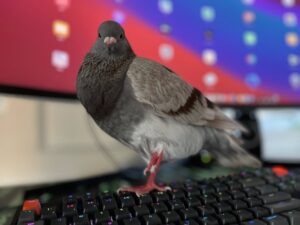What sound does a pigeon make? Pigeons are a common sight in many cities around the world and are known for their distinctive cooing sounds.
These sounds, which are often described as soft and gentle, are a key part of the pigeon’s vocalizations.
In this article, we will explore the different sounds that pigeons make and the purposes that these vocalizations serve.
We will also discuss the other forms of communication that pigeons use, such as body language and gestures.
By the end of this article, you will have a better understanding of the rich and varied vocalizations of these fascinating birds.
JUMP TO:

What sound does a pigeon make? Cooing
Pigeon cooing is a type of vocalization that is commonly made by pigeons. This cooing noise is typically soft and gentle, and is often described as being similar to the sound of a dove. Pigeon cooing is typically made by male pigeons, and is used to attract potential mates.
Pigeon cooing is typically made by both male and female pigeons, and can be heard in a variety of different situations. For example, pigeons may coo when they see a potential mate, or when they are relaxed and content. Pigeon cooing can also be heard when pigeons are feeding or when they are perched on a roof or other high place.
Pigeon cooing is thought to be an important form of communication for these birds. By cooing, male pigeons can signal their presence to potential mates and attract their attention. Female pigeons may also coo to signal their interest in a potential mate.
Check this out: Why does a pigeon coo?
What other sounds does a pigeon make? Chirping, clicking, whistling
In addition to cooing, pigeons also make a variety of other vocalizations. These can include chirping, clicking, and even whistling.
Pigeon sound of chirping
Pigeon chirping is a type of vocalization that is commonly made by pigeons. This chirping noise is typically louder and more high-pitched than the cooing noise that is commonly associated with pigeons. Pigeon chirping is often used by pigeons to communicate with each other or to signal danger.
Pigeon sound of clicking
Pigeon clicking is a type of vocalization that is commonly made by pigeons. This clicking noise is typically made with the bird’s beak and can be heard in a variety of different situations. Pigeon clicking is often used by pigeons as a form of communication with other pigeons, or as a way to signal that they are looking for food.
Pigeon sound of whistling
Pigeons are also known to make whistling noises, which can be heard when they are flying or when they are perched on a roof or other high place. This whistling noise is created by the movement of air through the pigeon’s feathers and is thought to be used by pigeons to communicate with each other or to signal their presence to other birds.
Overall, the sounds made by pigeons are an important part of their behavior and communication. These gentle cooing noises, chirps, clicks, and whistles help pigeons communicate with each other and navigate their environment.
What sounds does a pigeon make when around a human?
Pet pigeons may make a variety of sounds when they are around humans, depending on the individual pigeon and the situation.
Some common sounds that pet pigeons may make include the above-mentioned cooing, chirping, clicking, and whistling.
These sounds may be made by pet pigeons when they are content and relaxed, when they are excited or alarmed, when they are searching for food, or when they are flying or perched on a high place.
Overall, the sounds made by pet pigeons will depend on the individual bird and the situation.

Do pigeons only use sounds to communicate? No!
In addition to vocalizations, pigeons also use body language and gestures to communicate with each other. Pigeons use a variety of different body movements and postures to convey different meanings and intentions.
Pigeon puffin out its chest
One common form of body language that pigeons use is puffing out their chest. When a pigeon puffs out its chest, it is often a sign of dominance or aggression. This posture can be used to signal to other pigeons that the pigeon is in charge or to assert its dominance over another pigeon.
Pigeon shaking its tail feathers
Pigeons may also shake their tail feathers to signal aggression or dominance. This movement, which is often accompanied by puffing out the chest, can be used to intimidate other pigeons or to assert the pigeon’s dominance in a particular situation.
Pigeon bobbing its head
Another common body language gesture that pigeons use is bobbing their head. This movement, which is often accompanied by a cooing noise, can be used by pigeons to show interest in a potential mate. Pigeons may also wag their tail to signal their interest in a potential mate.
Overall, the body language and gestures of pigeons are an important part of their behavior and communication. These subtle movements and postures help pigeons communicate with each other and navigate their social and physical environment.
Final thoughts and tips on pigeon sounds
In conclusion, the sounds made by both pet and wild pigeons are an important part of their behavior and communication.
These gentle cooing noises, chirps, clicks, and whistles help pigeons communicate with each other and navigate their environment.
The rich and varied vocalizations of these fascinating birds are a key part of what makes them such a familiar and beloved presence in many cities around the world.
Understanding the different sounds that pigeons make and the purposes that they serve can help us appreciate these birds and their unique place in the natural world, whether they are pets or wild birds.



